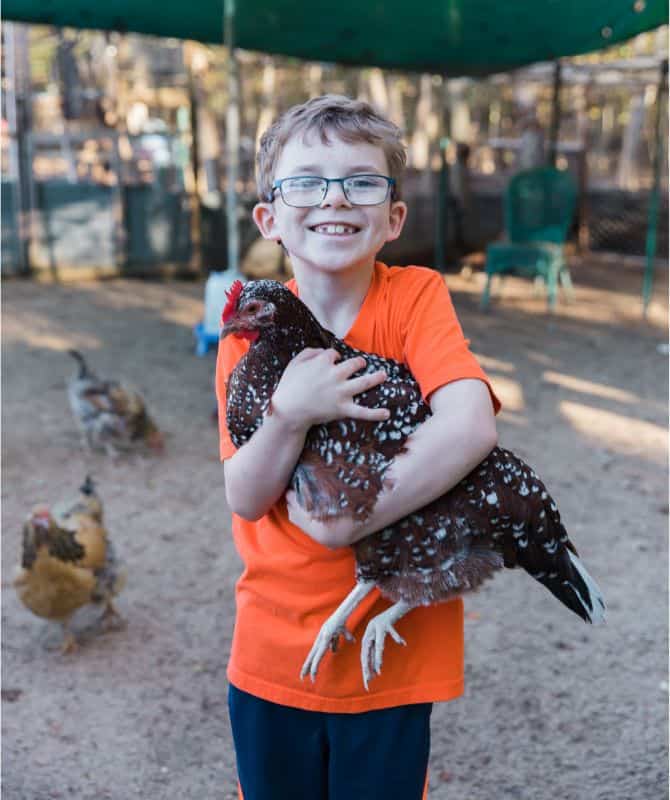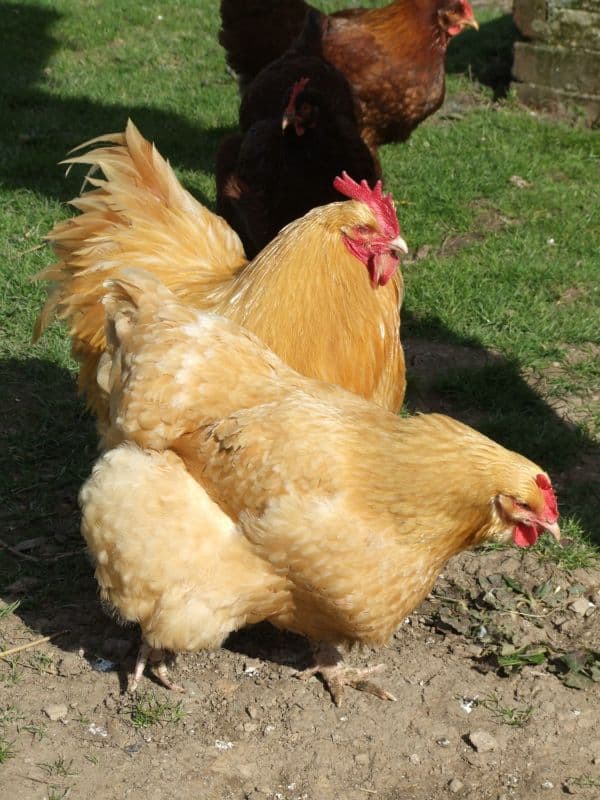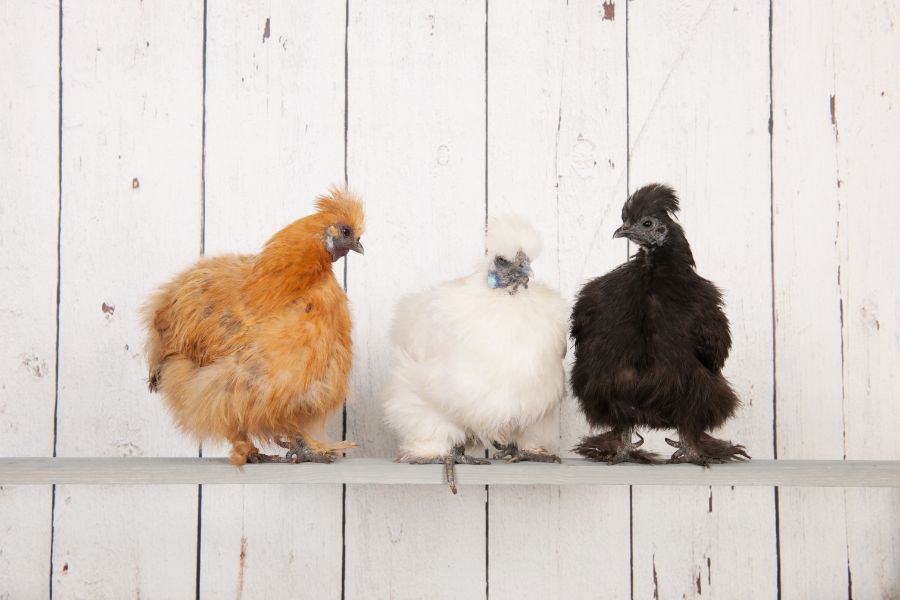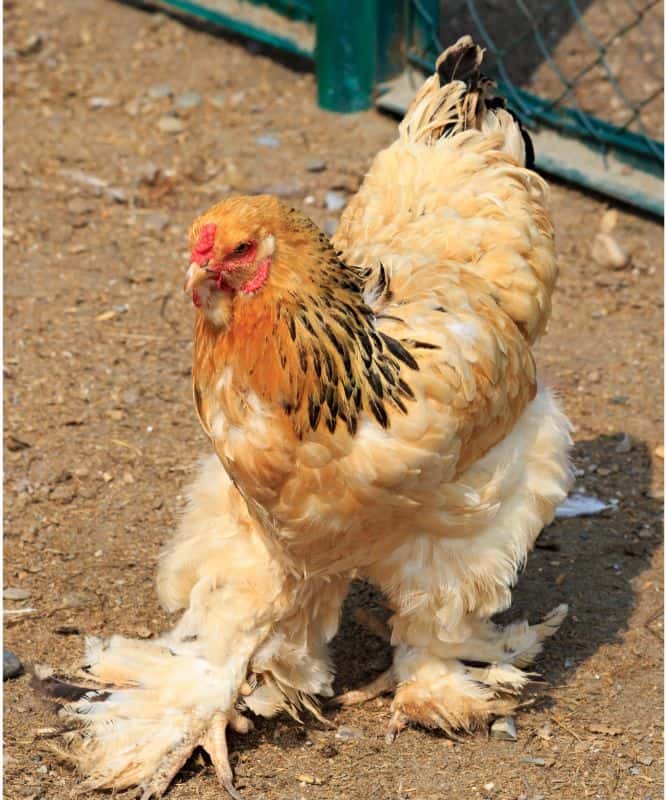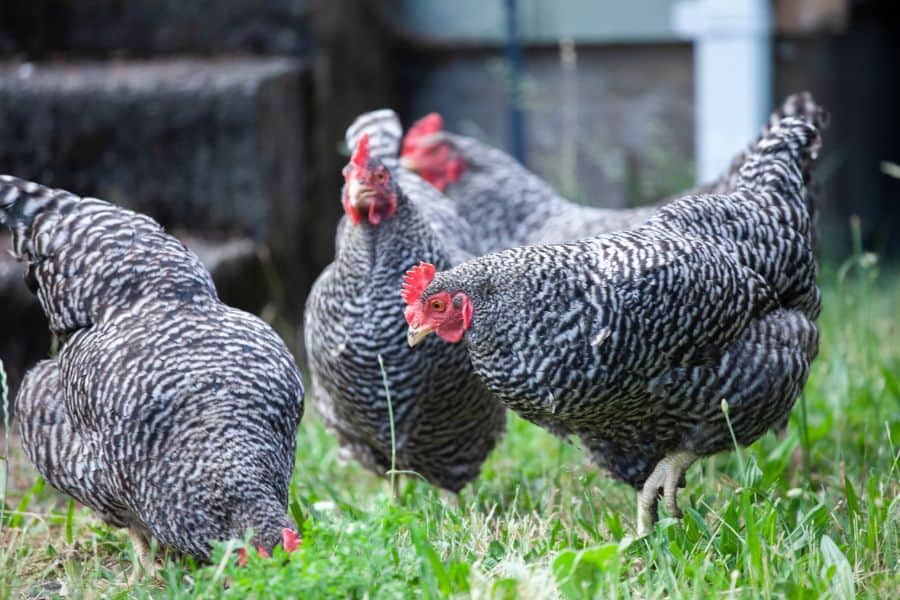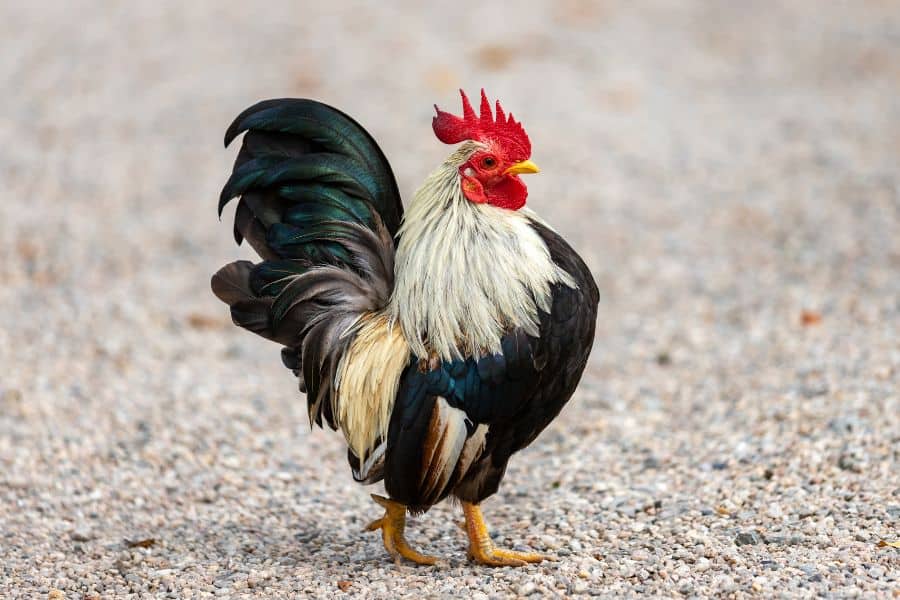Who, in their tender age, didn’t cherish having chicken for a friend? Youngsters typically make an excellent combo with chickens, often much better than with many other pets.
But before you get your little one a feathered friend, ensure that you’re bringing them the ideal type of bird.
As much as chickens are fantastic creatures, generally, some breeds are better suited for companionship with kids than others. As such, it’s imperative to do your homework well if you want the best friendship between the two.
That begs the question — what are some of the best chickens for children?
In this blog post, we’ll dive into some of the best go-to chicken breeds for juniors. Most of these breeds aren’t just great for friends; they pack lots of charm and goodness to make your little munchkin’s life even more wonderful.
7 Chicken Breed for Youngsters
When looking for the best chickens for children, it’s worth noting that we don’t have one breed that’s guaranteed to give your little one the best companionship. The suitability of any chicken on pet role largely depends on whether the bird was handled regularly and kindly as chicks.
As such, no matter the chicken breed you choose, getting them when they’re chicks is highly advisable. Chickens trained to be pets from a young age become better pets than mature birds trying to play the role when all grown.
But then again, we still can’t ignore that some chicken breeds are naturally more inclined to make better pets than others.
Here are some great options for youngsters:
1. Buff Orpingtons
If you don’t have a Buff Orpington among your flock, then you’re definitely missing out on a charming personality in your backyard. These English birds have a generally sweet disposition and are considered a great choice for kids.
The birds are docile, friendly, and known to relish their companionship with kids. In fact, once the bond is well established, don’t be surprised when the bird occasionally perches on your little one’s shoulders the same way a parrot would.
The bird is a dual-purpose breed, working perfectly for meat and egg production. Well, not sure whether using the bird for meat would be an option in this case, but you can still benefit from their egg-laying proficiency.
Expect about 200 to 280 eggs annually, which is a great plus on top of their perfect demeanor. They go broody often and make great mothers once they hatch, so kids will find the chicken even more fascinating.
2. Silkies
When we hear a pet chicken mentioned, Silkies are among the first breeds that pop up in our minds. Well, that perhaps is because they’re among the few birds developed with the pet role as a priority.
These chickens come in a wide range of colors, with black, white, blue, partridge, and gold being the recognized variants. The birds are famous for their fur-like plumage, a characteristic attributed to an autosomal recessive gene that prevents pennaceous feathers from developing hooklets as in other breeds
The adorable birds are generally super-friendly, docile, and naturally kid-friendly, cherishing a bond with children. They’re also on the smaller side, which is a great plus for the little fingers.
However, Silkies aren’t good at laying eggs. Yet, they make up for it through their proficient maternal skills. The bird will hatch other chickens’ eggs and take care of the chicks, which is not only more fun for kids but also a great way to teach an invaluable lesson in selflessness and care.
However, one thing worth noting is that these five-toed birds aren’t the smartest birds and have poor survival instincts, often making them easy targets for predators. As such, they may not be the best for homes frequented by predators.
3. Cochins
Cochins are the other option for anyone looking for a chicken breed that gets along well with kids. They are large and heavy birds with fluffy breeds. But don’t let the enormous size fool you — they’re extremely gentle, docile, and tolerant birds.
The chicken breed was developed in China and is dual-purpose, excelling at egg and meat production. It’s a super-hardy bird that will thrive in areas other breeds won’t, and that’s always a good thing for any chicken.
The bird will produce 150 to 200 eggs annually, assuming they won’t go broody. However, they often do go broody and exhibit excellent maternal skills when they hatch.
Cochins won’t mind confinement, but if you can let them out to explore, it can boost their happiness. They love foraging, but they may not be the best foragers in the poultry world, so ensure that your little one gives them a treat as a top up on what they’ve gathered in the field.
Just ensure that they don’t feed them lots of treats. The chickens are more predisposed to growing too fat, which could affect their egg production and increase their chances of developing a liver disorder.
4. Jersey Giants
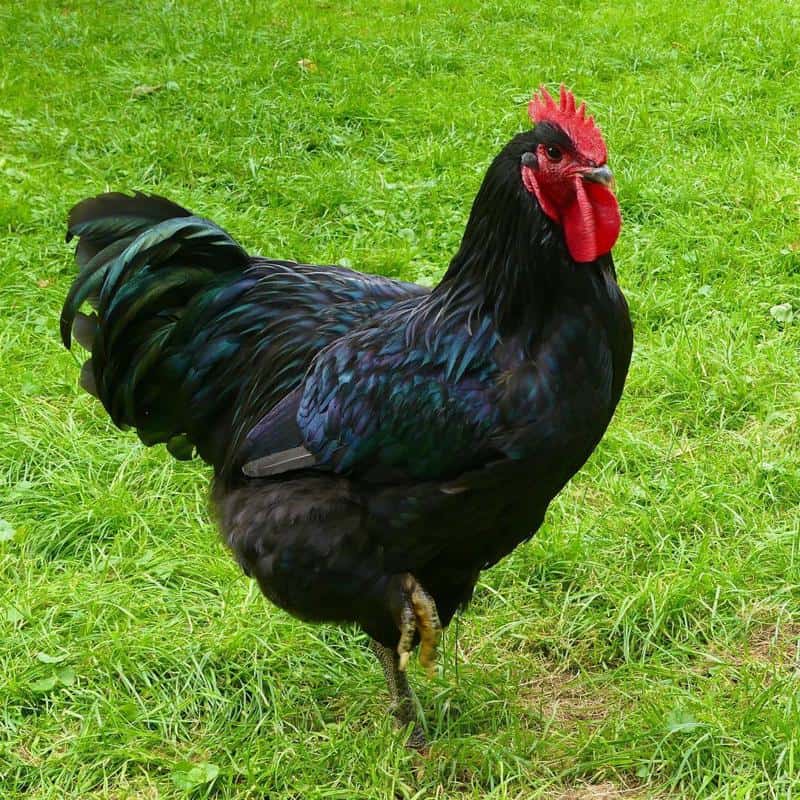
Standing out as the largest chicken breed, Jersey Giants may seem a poor choice for kids. But that’s not the case, as these birds exhibit an extremely gentle and friendly disposition around other chickens and children.
In fact, they have a very sweet disposition that some people choose to keep them as pets rather than the table birds they’re meant to be.
The average male weighs 13 pounds when mature, while hens typically weigh about 11 pounds.
The hens will produce about 150 to 200 eggs per year, which isn’t poor, yet not prolific either. They seldom go broody and don’t make great setters, as their large and heavy weight often breaks the eggs.
But other than that drawback, they make great pets and will seamlessly get along with kids. However, they may not be the best size for the smaller lads, since they stand so tall.
5. Plymouth Rocks
Plymouth Rocks are American birds developed in the mid-19th century in Massachusetts. They’re threefold birds that can lay eggs, provide quality meat, and make an adorable family pet.
On egg production, Plymouth Rocks will supply you with 3 to 5 eggs weekly, up to about 200 eggs per year. As for the meat, it’s considered tasty and juicy, making these birds a popular choice for chefs.
But that’s not all — if you’re looking for a perfect feathered companion for kids, you have one in Plymouth Rocks. These avian buddies are calm, friendly, and peaceful birds that prefer walking away from disputes than confronting their antagonists.
They also exhibit a strong connection to their human companions, sometimes following them around for an extra treat or a warm hug.
Their standard size makes them a more favorable choice for kids than Jersey Giants — at least on that facet. But then, they’re not a flighty breed, so ensure their space is well fortified against predator attacks.
6. Austrolorps
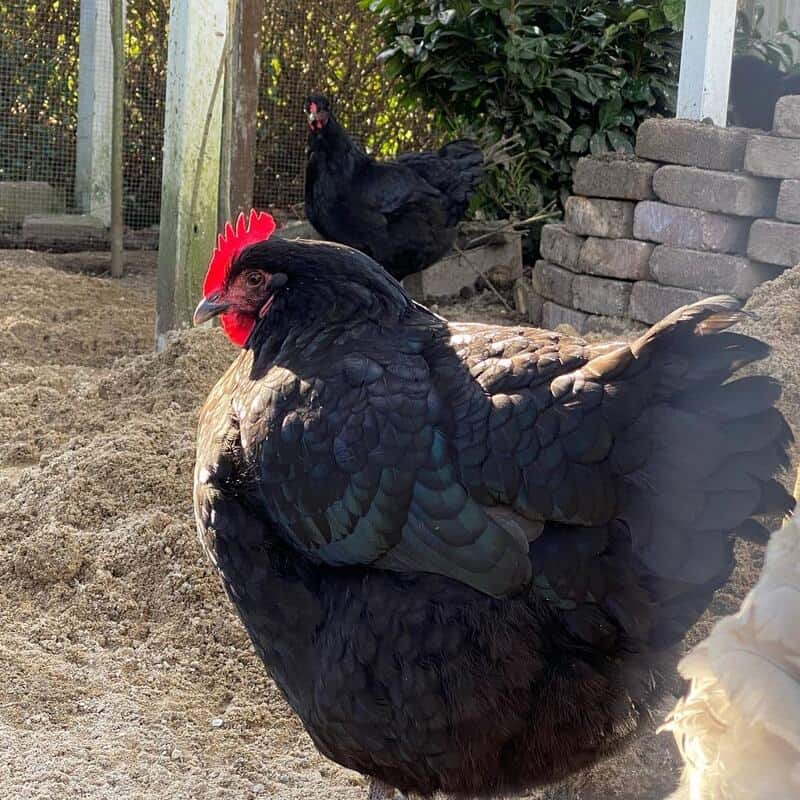
Australorps, native to Australia, are considered the country’s honorary national bird — and deservingly so. The dual-purpose breed is an excellent layer of light to brown tinted eggs and can rack up an astounding 250+ eggs by the close of the year.
They’re also a decent breed for their meat, just like their Orpington parent. In addition, these birds, even the roosters, are super-friendly to children, making them a top candidate for chicken parents who want a breed that can get along well with young poultry caregivers.
The single-combed breed is easy to maintain, loves to forage, and can be kept in confinement. But then, like Cochins, Australorps are predisposed to becoming fat, so don’t keep them confined always.
Lastly, these red-earcombed birds can survive in warm weather. There’s a caveat, though — their black feathers can absorb heat and make them overheat. As such, provide the birds ample shade if living in areas that experience high temperatures.
7. Old English Game Bantams
If you want an ornamental chicken that makes great friends with children, consider Old English Game Bantams. These chickens are super docile, easy to handle, and great for showing to 4-H or APA/ABA open shows.
The birds, including the cockerels, are so friendly that children can snuggle them just fine. But as usual, the female version is naturally friendlier than the males, so it’s best to work with Bantam hens for a pet.
Old English Game Bantams are also very hardy breeds, so they can survive in settings where most chickens won’t. That’s on top of being extremely active, making them super-interactive birds.
But again, it’s worth noting that raising style defines their suitability as pets. Also, getting the chicken from a reputable breeder is highly advisable as those from hatcheries can be a little bit mean.
3 Reasons Every Child Deserves a Pet Chicken
Getting a chicken for the little family member is more than just bringing a bundle of joy into their lives.
Here are the top 3 reasons for getting your child a chicken pet:
1. Easy Companionship
The ideal breed of chicken can make a perfect companion with kids. Chickens can show affection, some developing a bond akin to that of a well-trained canine friend. This can foster a sense of responsibility and empathy in youngsters, helping them become better adults.
2. Educational Value
It’s absolutely fine for your little one to read about chickens in books. But how about bringing them up around these feathered beings having one they call their favorite? A first-hand experience with a chicken friend will help them learn beyond what books and fairy tales offer.
3. Chickens Are Entertaining Creatures
Kids are easily amused, and chickens can be good at creating captivating moments. The magical sounds they make, their peculiar behaviors, and their distinct personalities offer a perfect dose of entertainment.
Can Chickens Make Kids Sick?
Chickens can certainly make kids sick, but that’s just not likely. Regardless of the breed, chickens can carry the dangerous Salmonella bacteria that can easily be passed onto children, making them sick. Hence, it’s best not to let the little ones get kissy with chickens to avoid this.
Also, try to keep a bottle of sanitizer handy for the youngsters to sanitize their hands after handling chickens. Washing hands with soap is also an option, but kids are likelier to opt for a strategically placed bottle of sanitizer than return to the house to wash their hands. Cleaning hands will ensure they don’t inadvertently ingest Salmonella bacteria or other microbes.
Of course, Salmonella isn’t the only threat. Avian influenza, Campylobacteriosis, and Histoplasmosis are on the list of diseases that can easily spread from chickens to humans.
As such, practicing precaution when handling chickens is highly recommended. Keep the coop clean, wash hands after handling them, and ensure that your feathered companions are up to date with vaccinations to reduce the chances of disease occurrence.
Conclusion
Children and chickens can be perfect buddies if you choose the right breed. As seen in this article, there are numerous delightful breeds out there that can make your little one’s life more fascinating.
However, when choosing the breed, it’s generally recommended to work with hens, as male chickens are naturally more inclined to act protective of the flock. Also, starting with a young pet chicken is wise, as that will help them to grow into the role seamlessly.
